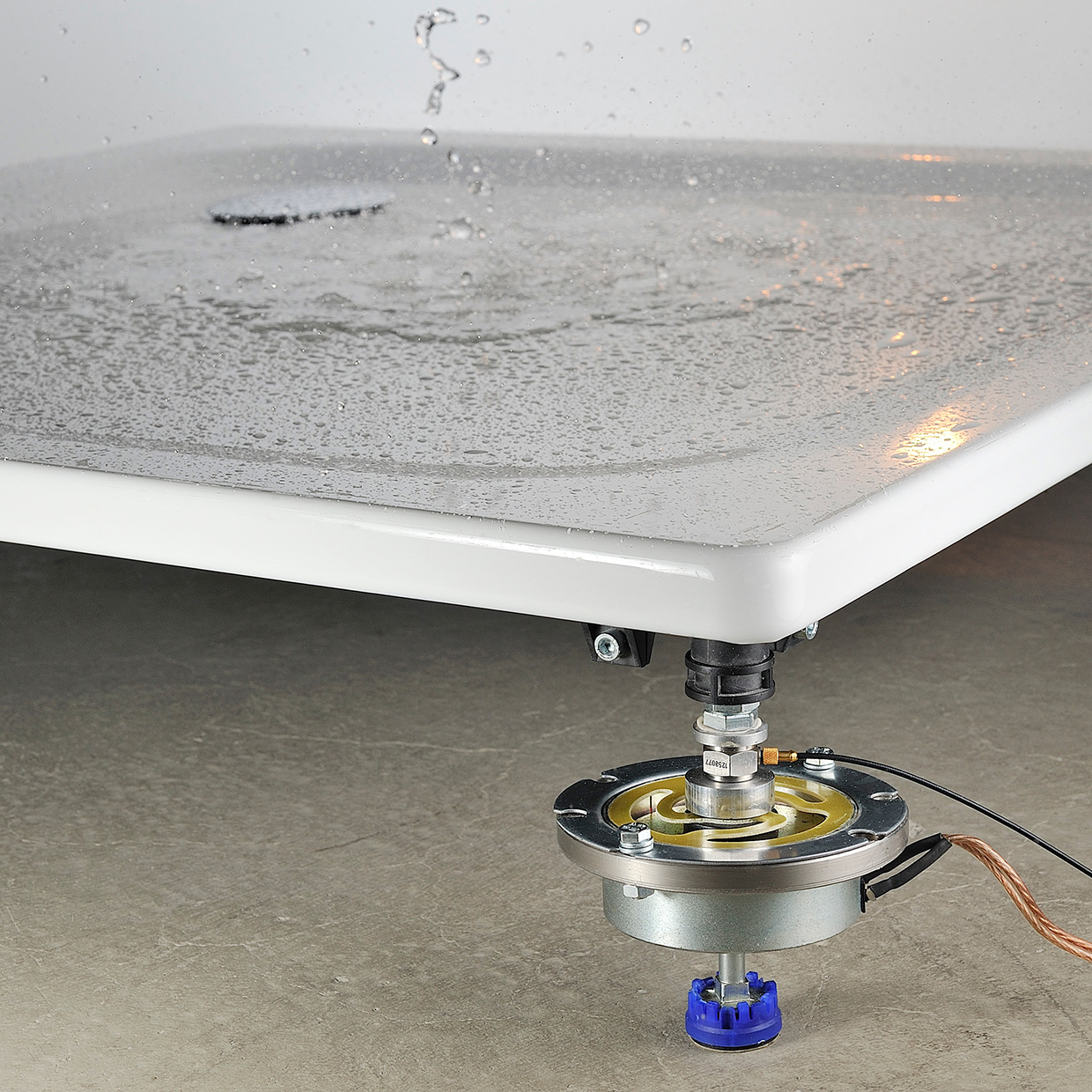
Sound insulation is not only essential to protect against deafening noise. It is also necessary to reduce all the disturbing noise that impairs relaxation, sleep and concentrated work. An especially disturbing group of noise sources in buildings are building services systems and installations, such as ventilation and heating systems, elevators and a large number of water and sanitary installations. In addition to noise in the vicinity, they also cause vibrations which propagate through the building as structure-borne sound and are finally reflected as audible sounds from the walls of adjacent rooms.
So far, elastic fixings and underlays have generally been used as countermeasure, but only a minor effect could be achieved at low frequencies. The problem, however, is exactly low-frequency humming or booming as an audible result.
Therefore, an active system has been developed for the insulation of low-frequency structure-borne sound. This cost-efficient and simple system in terms of control technology consists of a vibration sensor and actuator which are linked by an electronic module (signal processing and amplification) and coupled to the vibrating structure. In this way, the transmission of low-frequency vibrations from installations and equipment into the structure can be considerably reduced already at the point of introduction. At the same time, an adjusted combination with passive measures is easily possible.
Measurement and audibility results show that this active system is particularly effective in the frequency range between 63 and 400 Hz. The combination of passive and active vibration reduction even achieves a broadband noise reduction in the entire range of human hearing. In view of the resulting gain in living comfort and quality of life, present developments focus on the optimization of the relation of costs and benefit, and not only on the cost per dB of noise reduction. The focus is also on the technical integration into the building structure, which is to save as much weight and space as possible, whether in a new construction or renovation.